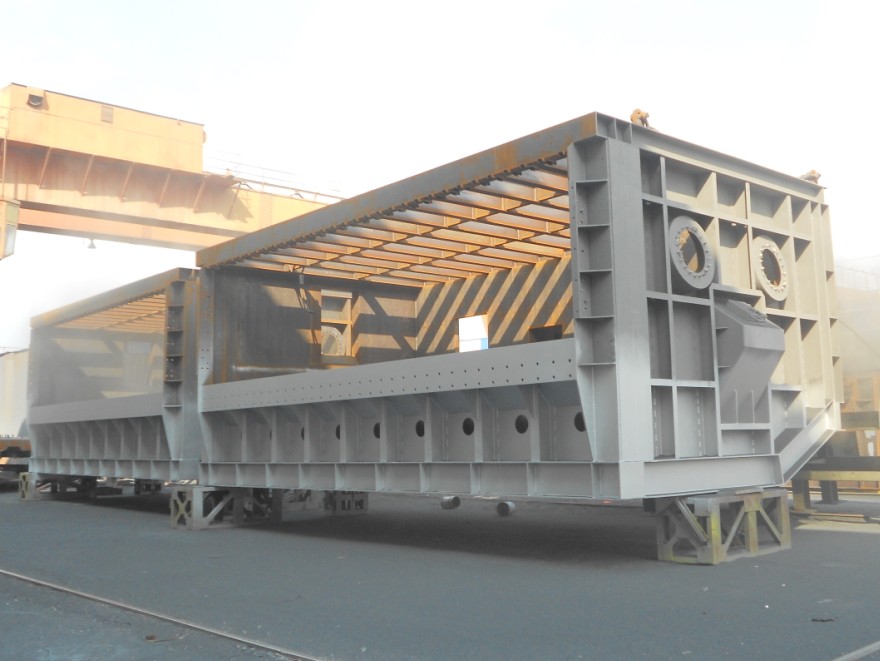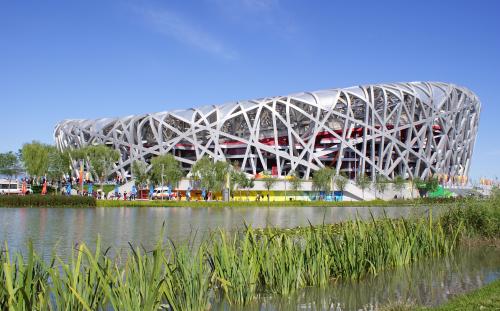I have sorted out the Chinese national standards on the processing and welding of welded structural parts for reference by those in need. All Chinese manufacturers of welded structural parts (including construction steel structures and general steel structural parts) shall comply with this standard in the production, manufacture, and acceptance of products, unless otherwise specified.
GB/T 19804-2005
Welding – General tolerances for welded constructions –Dimensions for lengths and angles – Shape and position ( ISO 13920: 1996,IDT)
Scope of application:
This standard specifies the dimension tolerance and shape and position tolerance of welded structural parts. These tolerances have four grades and are suitable for general manufacturing accuracy. The choice of tolerance level should meet the actual demand.
The general dimension tolerance and shape and position tolerance stipulated in this standard are applicable to welded structures of welded parts and welded assemblies. Complex structures can be specified as required.

Applicable to all welded structural parts such as equipment frames, equipment shells, pressure vessels, box girders, etc. All China steel structure manufacturers or steel plate fabrication supplier shall comply with this standard unless otherwise specified.
GB50205-2001
Code for acceptance of construction quality of steel structures
Brief introduction:
This specification is divided into 15 chapters, including general rules, terminology, symbols, basic regulations, entry of raw materials and finished products, welding engineering, fastener connection engineering, processing engineering of steel parts and steel parts, steel structure assembly engineering, pre-assembly engineering of steel components, installation engineering of single-layer steel structure, installation engineering of multi-storey and high-rise steel structure, steel network,installation of frame structure, profiled sheet metal, coating of steel structure, completion and acceptance of steel structure parts, and nine appendices.
In general, construction, installation and acceptance of building steel structures in China should be carried out standards.
GB/T 11345- 2013
Non-destructive testing of welds – Ultrasonic testing – Techniques, testing levels, and assessment
(ISO 17640: 2010, MOD )
Scope of application:
This standard specifies the manual ultrasonic testing technology for metal melt welded joints with base metal thickness not less than 8 mm and low ultrasonic attenuation (especially small scattering attenuation). The temperature of weld and base metal is between 0---60 and C. This standard is mainly applied to all penetration welds of ferrite and steel for base metal and weld.
This standard specifies material-dependent ultrasonic values based on steels with longitudinal and transverse acoustic velocities of (5920 + 50) M / s and (3255 + 30) M / s.
This standard specifies four detection levels. Different detection levels correspond to different defect detection rates. Appendix A gives guidance for selection of detection levels A, B and C.
This standard specifies the general requirement to use test grade D only in special applications, and test grade D can only be used when specified in the specification. Special applications include non-ferrite weld inspection, partial penetration weld inspection, weld inspection with automated equipment, and weld inspection at temperatures ranging from 0 to 60 C.
This standard can be used for display assessment or acceptance by any of the following technologies:
A) Evaluation based on display length and echo amplitude
B) Evaluation based on display characteristics and display size (using probe mobility technology).
GB 50661-2011 Code for welding of steel structures
Scope of application:
This code is applicable to welding of steel structures with steel thickness greater than or equal to 3 mm under static or dynamic loads in various industrial and civil steel structures. The welding methods applied in this code include electrode arc welding, gas shielded arc welding, self shielded arc welding, submerged arc welding, spot slag welding, gas-electric vertical welding, bolt welding and the combination of the corresponding welding methods.
GB/T 3323 - 2005
Radiographic examination of fusion welded joints in metallic materials
Scope of application:
This standard specifies the basic methods of X - ray and gamma - ray photography. This standard is applicable to welded joints of metal material plates and pipes.
GB/T 29711-2013
Non-destructive testing of welds—Ultrasonic testing—Characterization of indications in welds
(ISO 23279: 2010,IDT)
Scope of application:
This standard specifies how to characterize internal displays, that is, to classify them as planar or non planar. This standard is also applicable to remove the display of bare weld surface after welding.
GB/T 19418- 2003/ISO 5817:1992
Are-welded joints in steel- Guidance on quality levels for imperfections
(ISO 5817:1992, IDT)
Scope of application:
This standard specifies the quality grade of defects in steel arc welding joints. These grades are related to the manufacturing quality of the product and are not related to their applicability (see 3.1).
The following welding methods and process categories specified in accordance with GB/ T 5185 are:
11:Metal arc welding without gas protection
12:Submerged arc welding
13: Gas shielded arc welding
14: Non melting pole gas shielded arc welding
15: Plasma arc welding
- Manual, mechanized and automatic welding methods
- All welding Position
- Butt welds, fillet welds and branch pipe joints
- Steel with a thickness of 3-63mm
-
Metallurgical factors such as grain size and hardness are not considered in this standard.
The above are the most important national standards (GB) concerning the manufacture and welding of steel structures in China. The production, manufacture, installation and acceptance of welded structural parts and construction steel structures should be in accordance with these standards. Foreign purchasers should also be aware of these standards so that when purchasing steel structure products in China they know which standards to follow for acceptance.


